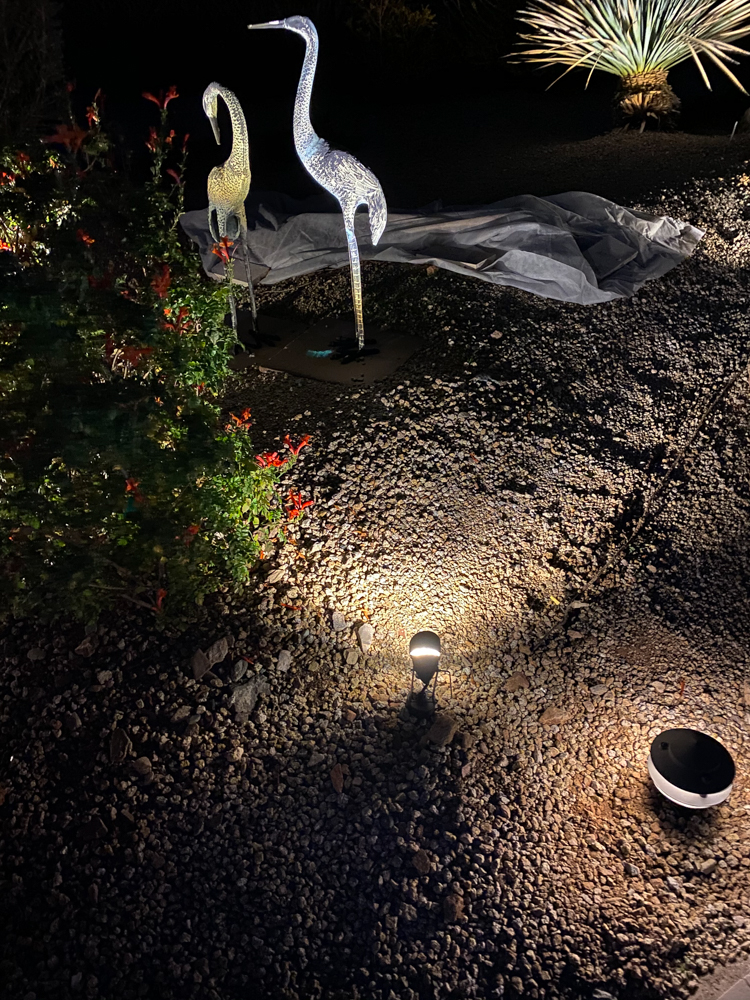LEDs rule.
It’s hard to describe how barren the garden was in my home when I bought it three years ago. After some 20 years the extent of the landscaping was a couple of dying Texas Sage bushes with blown irrigation. Landscape lighting was provided by those execbrable solar cell units, doubtless stuck in the ground by some cretinous realtor looking to make her 6% for showing buyers the bathroom. Their light output was reminiscent of the three position lighting switch on British motorcycles equipped with lighting by one Joe Lucas – the options were Dim, Flicker and Off. Mostly the result was Off regardless of the position of the switch and these miserable landscape lights were probably made by Joe also. The first two things I did was have the garden dug up to lay all new irrigation lines and then chucked those solar lights in the garbage.
Their replacements came from LampsPlus in the guise of floods and spots, the latter used to accentuate the many sculptures and dramatic new plants I installed. These are not cheap, but you will not be replacing them any time soon – read on.
One unexpected result was that the new irrigation saw to it that the new plants prospered, even in the blast furnace summers in Scottsdale, Arizona, and one of the honeysuckles was now denying light to my twin crane sculpture. The option of cutting back the plant was simply not a choice, so I did the logical thing and added another spot, wiring it into the 14AWG bus line I had installed in a huge loop under the gravel. The lights tap into the bus, so if one fails the others are unaffected.

The second crane enjoys drama again.
The thermal blanket in the rear protects fragile Lantana from frost.
These LED spots – a three lens affair set in a very robust metal enclosure – consume but 3 watts (the floods draw 4 watts), and it will give you some idea of the number of lights installed that I use dual 120 watt timed power supplies/transformers; the whole thing runs on safe 12 volts power. In the three years since installation not one light has failed and they burn 5 hours every evening. So that’s almost 5,000 hours and counting. The manufacturer claims a 30,000 hour life.
But all this preamble is yet another excuse to show off the iPhone 11 Pro’s Night Mode. I clicked the button, the iPhone told me to hold steady for 3 seconds and the result is SOOC, of course.